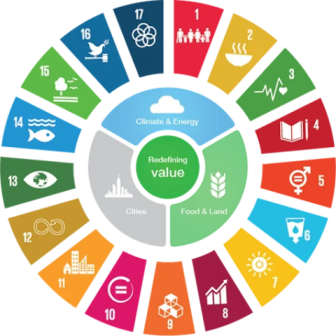Introduction
Digital transformation and the application of digital technologies present unprecedented opportunities to promote sustainable development and accelerate progress towards achieving the 2030 Agenda. From improving the delivery of public services to supporting financial inclusion, from enhancing agricultural efficiency to promoting decent work and economic growth, digital technologies can significantly contribute to the 2030 Agenda. However, the use of digital technologies is not a silver bullet and comes with its own set of challenges. One such challenge is the digital divide, which refers to the gap between those who have access to digital technologies and those who do not. While the digital divide has been widely discussed, another critical issue is emerging: the data divide.
Understanding the Data Divide
The concept of the data divide does not yet have a universally accepted definition, leading to varied interpretations in existing literature. Lev Manovich identified a “data analysis divide” between data experts and those without proper computer science training. Danah Boyd and Kate Crawford discussed a new form of divide between the ‘Big Data rich’ and the ‘Big Data poor,’ focusing on the accessibility and skills required to analyze and use Big Data. Ralph Schroeder highlighted a growing divide in the use of Big Data for academic or scientific analysis, while Mark Andrejevic emphasized that using data necessitates access to expensive infrastructure and data sets, leading to asymmetric sorting processes and different ways of thinking about data and knowledge application.
Matthew McCarthy notes that scholarship on the data divide often highlights two broad elements: access to and ownership of big data, and the skills and capacity to use such data. Another facet of the data divide concerns the collection of data, defined as the gap between individuals and communities that have adequate data collected and used about them and those who do not. This facet can also be seen in terms of resources and the ability to access and use open government data.
Given the lack of an agreed definition, the scope of the data divide should be kept broad, encompassing all kinds of asymmetries around data collection, ownership, skills, capacity, and usage.
Data Divide as a Development Divide
Data is a crucial tool for development, capable of improving accountability, transparency, policy formulation, and implementation. Converting data into intelligence allows for discerning trends and correlations that support effective, evidence-based policymaking and improved public service delivery. Broadly, data can support the 2030 Agenda in two ways. First, various data sources can complement official statistics to measure, monitor, and evaluate progress on the SDGs, providing accurate evidence for policymaking. For example, mobile phone spending patterns can serve as proxy indicators of income levels for SDG 1 (No Poverty). Second, extracting public value intelligence from data sources can further progress on the SDGs, such as using geospatial data to improve agricultural efficiency for SDG 2 (Zero Hunger).
The absence of data on a significant section of society and the lack of access to data or the capacity to analyze it compounds existing disparities. This emerging data divide leads to a significant development divide, hindering comprehensive analysis, especially in lower-income countries. Therefore, the data divide can drastically impact the progress of the 2030 Agenda by preventing the effective use of data in driving sustainable development.
Existing Efforts to Bridge the Data Divide
Recognizing the data divide as a growing concern, various forums and agencies are taking steps to address it. The G20 member countries, under India’s Presidency, noted the increasing data divide between and within developed and developing countries and emphasized the need to bridge this gap. The G20 endorsed the G20 Principles on Harnessing Data for Development (D4D) and welcomed the establishment of the ‘Data for Development Capacity Building Initiative.’ This initiative, developed as the ‘India-UN Capacity Building Initiative,’ aims to develop the capacity of Global South countries and enhance their technology and digital infrastructure.
The Zero Draft of the Global Digital Compact acknowledges that data divides can lead to the misuse of data and that the benefits of data are currently unequally distributed. Similarly, the Intergovernmental Group of Experts on E-commerce and the Digital Economy noted that the data divide compounds existing divides related to constrained digital access and connectivity within and between countries. The Commission on Science and Technology for Development, in its report “Data for Development,” highlighted the uneven distribution of the benefits of the data economy and the deepening data divide, particularly affecting lower-income countries.
Bridging the Data Divide
To effectively bridge the data divide, a long-term commitment and collaboration among global stakeholders are essential. Despite some existing efforts, these are still limited. A comprehensive approach is needed to ensure that the benefits of data are equitably distributed. This approach should focus on developing capacity, providing access to adequate infrastructure and data sets, and creating regulations and policies that support the growth of data-informed approaches to sustainable development.
Investments in supporting the data ecosystem, capacity building, and infrastructure are crucial to bridging the data divide. Additionally, developing a skilled talent pool with digital knowledge and data literacy is vital. Such a talent pool must be diverse and inclusive to ensure that different perspectives are embedded in data solutions, reducing bias and discrimination. Lastly, appropriate data governance frameworks are integral to reducing data gaps and ensuring that data benefits are shared equitably.
Conclusion
With weak and insufficient progress on around 50 percent of the SDG targets and a reversal of progress on around 30 percent of the targets, it is crucial to realize the true potential of data for sustainable development. Ensuring that the benefits of data are not unequally distributed requires focusing on bridging the data divide, thereby ensuring that no one is left behind in the data-centric future. By addressing the data divide, we can support the 2030 Agenda and promote inclusive and sustainable development worldwide.
|
Probable Questions for UPSC Mains Exam
|
Source – The Indian Express







